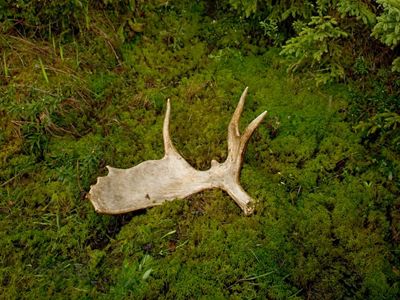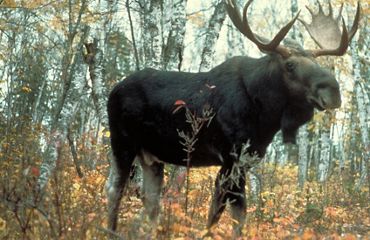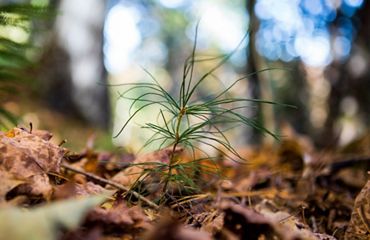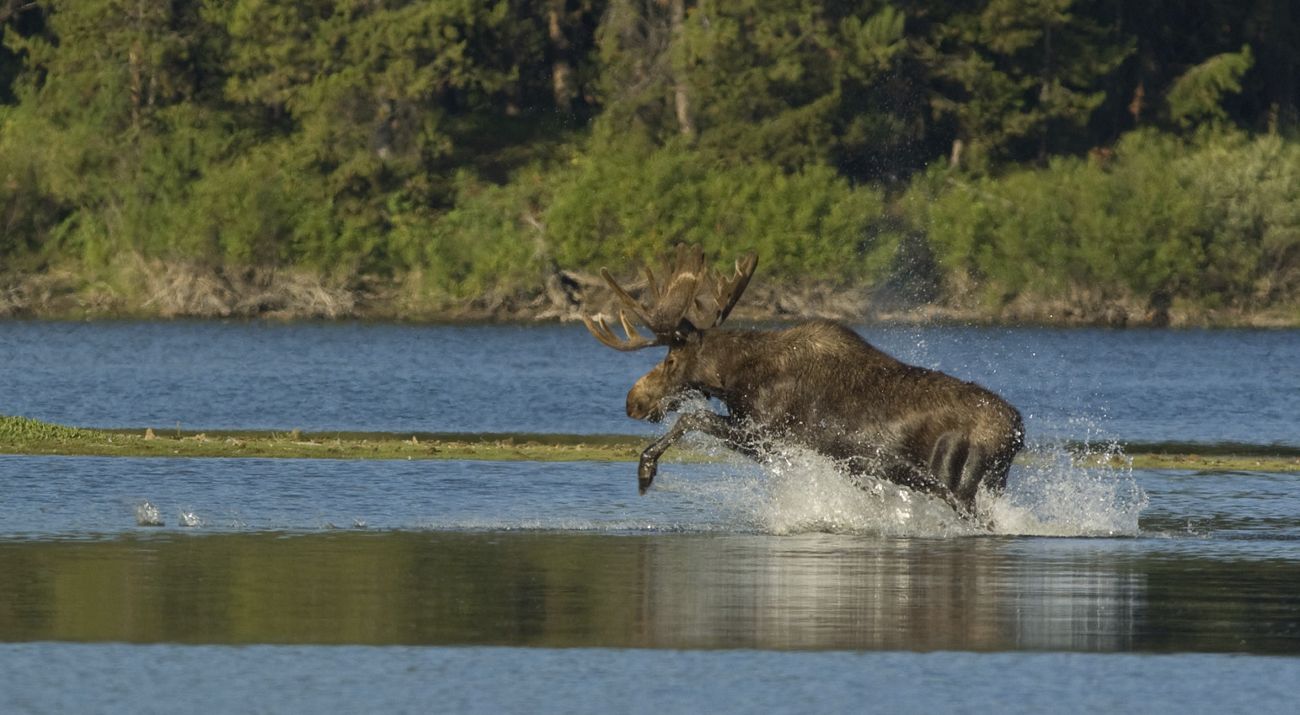Partnership Works to Help Moose
The Nature Conservancy is part of a collaborative effort to improve habitat for the state’s declining moose population.
Moose in Minnesota need help. Their numbers have dropped by 60 percent in less than a decade. If the trend continues, biologists worry there could be no moose in Minnesota even within the Arrowhead Region—a longtime moose stronghold within the state.
Researchers are not certain exactly why moose numbers are down, but they believe a mix of factors is responsible, including a warming climate, which means more ticks that feed on moose and a greater susceptibility to diseases and parasites.

Minnesota Moose Habitat Collaborative
To help moose recover, a diverse group of federal, state, county, tribal and conservation groups formed the Minnesota Moose Habitat Collaborative banded together to improve their habitat in prime moose territory. Led by the Minnesota Deer Hunters Association, the Collaborative includes the following partners:
- Cook County
- Fond du Lac Band of Lake Superior Chippewa
- Kitchi-Onigaming / Grand Portage Band of Lake Superior Chippewa
- Lake County
- Minnesota Deer Hunters Association
- Minnesota Department of Natural Resources
- St. Louis County
- Ruffed Grouse Society
- The Nature Conservancy in Minnesota
- University of Minnesota Duluth
- U.S. Forest Service
Together, the partners are improving 8,500 acres of publicly-owned forestland within Northeast Minnesota that has been identified as prime habitat for moose by moose experts. The work is funded by $2,960,000 from the Clean Water, Land and Legacy Amendment’s Outdoor Heritage Fund.
“It’s an investment in trying to save an iconic species in Minnesota,” says Craig Engwall, executive director of the Minnesota Deer Hunters Association.
Quote: Mike Schrage

Moose have to have two things: good forage and good cover.
Restoring Moose Habitat
The Collaborative has a clear plan for improving moose habitat. “Moose have to have two things: good forage and good cover,” says Mike Schrage, wildlife biologist for the Fond Du Lac Band of Lake Superior Chippewa.
Forage can be improved by timber harvest, fire, or by cutting brush in overgrown open areas. The Collaborative is working to clear brush from approximately 1,500 acres to promote the growth of low shrubs suitable for moose to browse
Chris Dunham, forest manager for The Nature Conservancy, describes the brush saws used as “giant weed whackers” capable of mowing down brush that has grown taller than a moose can reach. Heavy equipment is also being used to shear brush in winter when the ground is frozen.
The result of all the brush work is manna for moose. “The cleared areas will be full of nice fresh moose food,” said Dunham.
Another 3,000 acres will be both cleared of brush and then planted with trees needed by moose for cover. In all, approximately 2.5 million trees will be planted, mostly white pine and white spruce, but also some white cedar and red oak. Moose need these trees for shade from the summer heat and as shelter in the harsh winter. Wire enclosures and bud caps protect the seedlings from browsing by deer and other animals. Of course, years must pass before moose can benefit from newly planted trees, but tree plantings and brush removal will eventually create a patchwork of habitats needed by moose for cover and forage.
Quote: Craig Engwall

Enhancing habitat is one of the things we can do to help Minnesota’s moose population.
Fire as a Forest Management Tool
Historically, that patchwork pattern was created by fire and by logging. Wildfires in the Superior National Forest in 2006 and 2007 have created areas of good moose browse that have since attracted large numbers of moose. The Collaborative plans to use controlled fire to improve moose habitat on another 2,500 acres of prime moose habitat on U.S. Forest Service land including within the Boundary Waters, where heavy machinery cannot be used to clear brush and stimulate the growth of shrubs.
The Collaborative also plans to improve an additional 1,500 acres by combining ecological timber harvests with conifer restoration.
Altogether, it’s an ambitious effort. “Enhancing habitat is one of the things we can do to help Minnesota’s moose population,” Engwall said.
